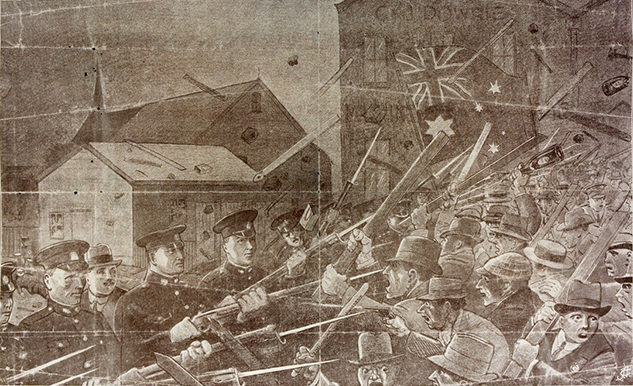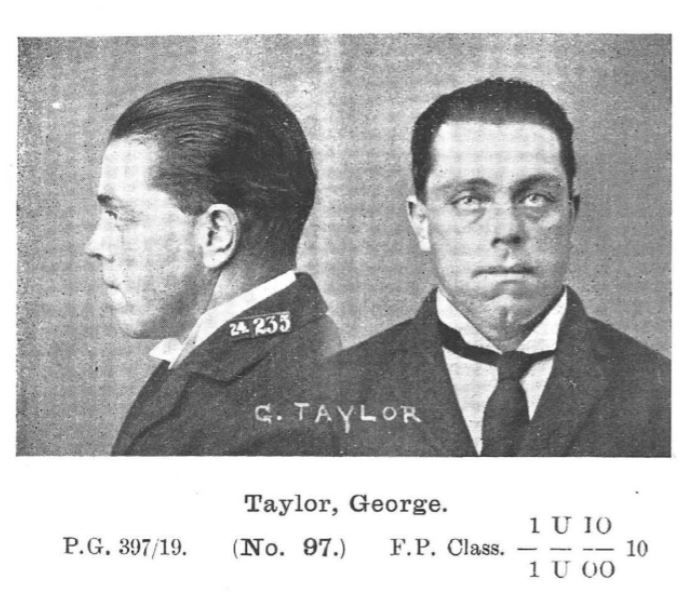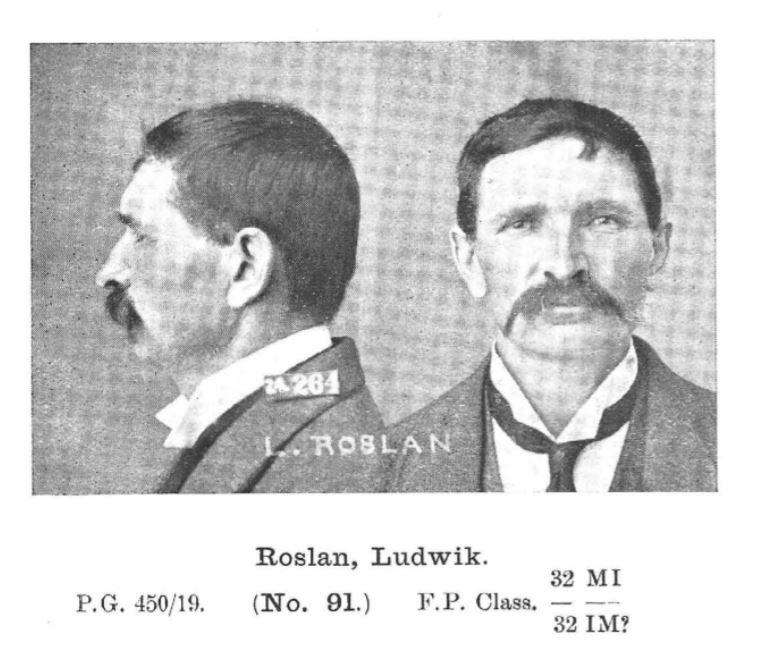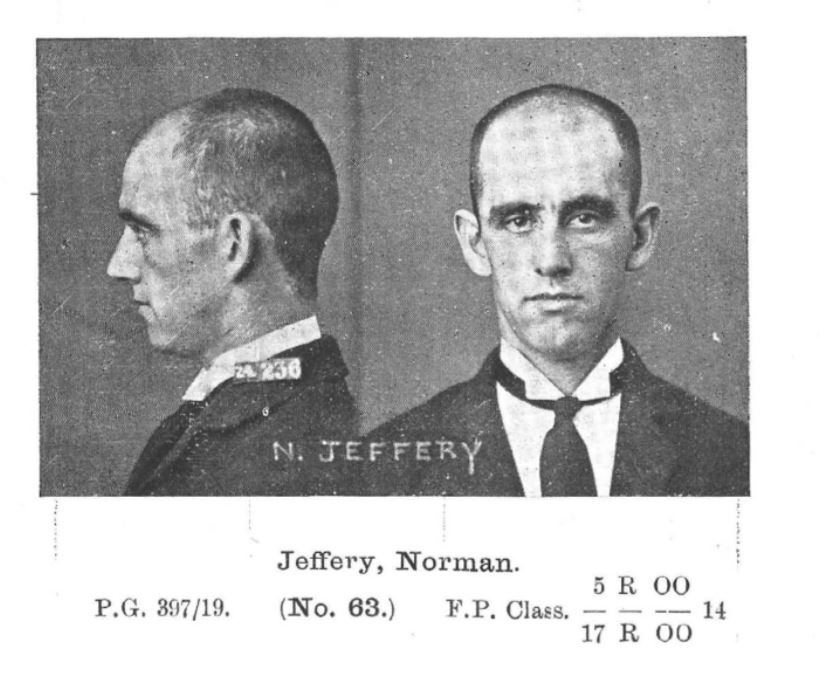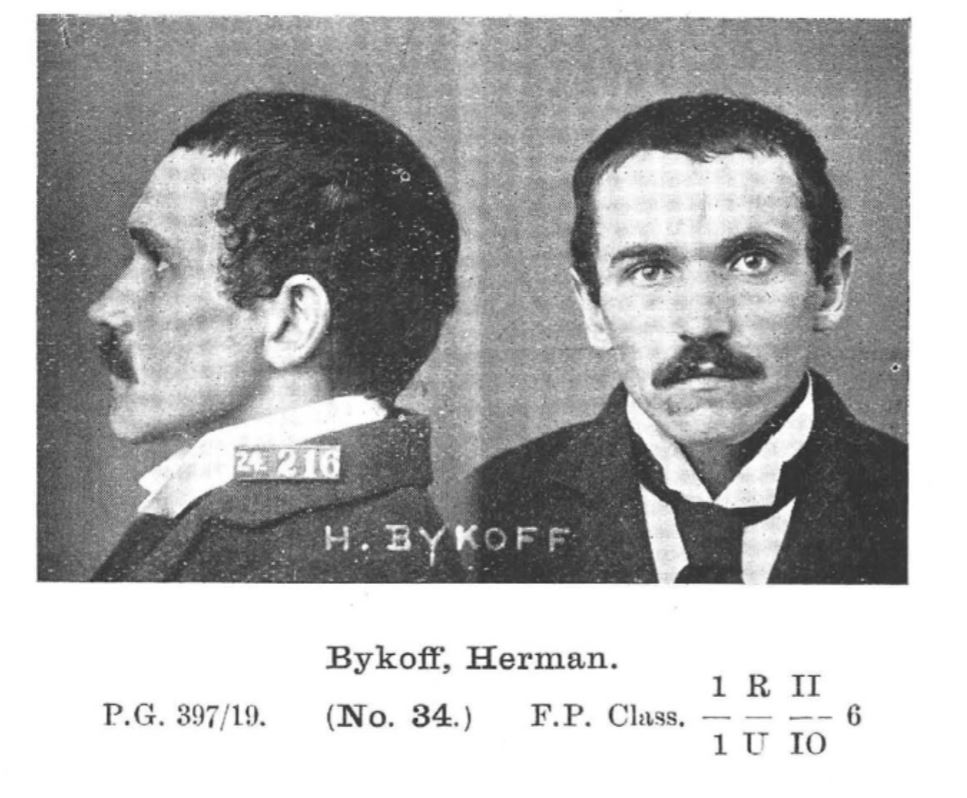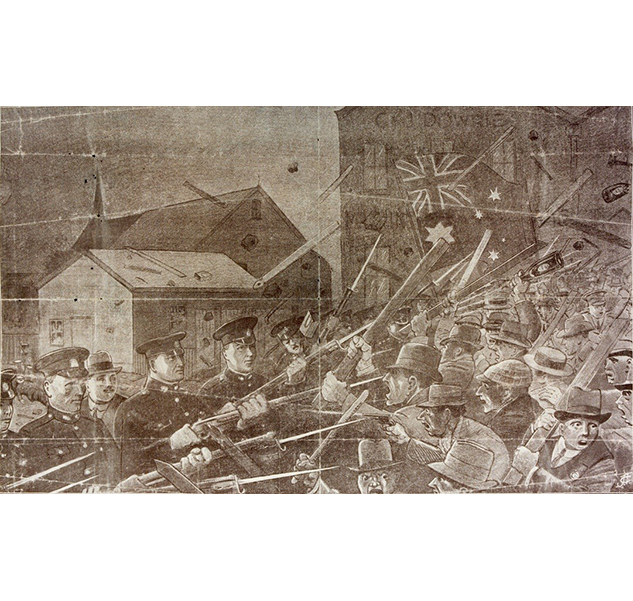Boggo S2 E12 – Red Flag Protests
- On : 18 April, 2019
- By : Boggo Road Gaol
- Category : Stories
- View : 3866
Boggo S2 E12 – Red Flag Protests
A century ago this month, one of the most violent political protests, indeed probably the first real protest of its kind – marched its way through the streets of Brisbane City. What would ensue over the coming days would change Brisbane forever. It would also see thirteen men locked up in Boggo Road Gaol for long sentences with hard labour.
Australia had been at war for the preceding five years. It was 1919 the end of the First World War, a bloody and terrible series of campaigns. The war was over and the soldiers had returned, all of them changed forever. We had changed forever. The politics of war was not over, however, this was the era that real freedom of speech and beliefs would begin. This political belief system would also turn horribly violent. This is the first time in Queensland’s history we had ever seen something like this…. but lets step back a little bit.
The root of the protests that would happen in the coming days in March of 1919 would be the War Precautions Act of 1914.
War Precautions Act 1914
The War Precautions act is described as – An Act to enable the Governor-General to make Regulations and Orders for the safety of the Commonwealth during the present state of war.
The Act would cover all types of regulations governing the use of transportation, lighting and even homing pigeons right through to the sinister type things like trespassing, spreading reports that might misinform or cause alarm or being a sympathizer to any enemy of the Commonwealth.
In Brisbane, there was a large group of Bolshevik nationalists, not intentionally violent by any means however very political in nature. It is this group of people that through the right to peaceful protest would be the commencement of an all out war for Brisbane over the next few days.
The Red Flag Procession
The Bolshevik community in Brisbane had requested permission to peacefully march through the streets of Brisbane to the Domain to hold a public meeting in protest against the continuance of the War Precautions Act despite war being over. The permission had been granted on the condition that (as the War Precautions Act Prohibited) no red flags or other political items be displayed. The conditions were agreed upon and on the afternoon of the 23rd of March the procession would leave from Trades Hall in Turbot Street and weave its way through the streets of Brisbane to the Domain, adjacent to the Botanical Gardens and the Parliamentary Buildings.
However, At around 2pm hundreds of men, women and children formed a procession with the children and women taking the lead. All members of the procession war something red. A red handkerchief, a sash, red ties and pieces of ribbon. Some members of the procession defiantly carried huge red flags.
The Evening Telegraph newspaper in Charters Towers shared the most comprehensive view of the drama. We publish here exactly as it was written.
RED FLAG PROCESSION
Evening Telegraph (Charters Towers, Qld. : 1901 – 1921), Monday 24 March 1919, page 3
Telegrams.
BOLSHEVIK RUMPUS IN BRISBANE. RUSSIAN RED FLAG PROCESSIONISTS.
CONFLICT WITH THE POLICE. ACTING PREMIER DECLINES TO COMMENT.
BRISBANE, Sunday.
Brisbane’s Bolsheviks were seen in their true colours yesterday. They attacked the police with sticks and stones and- forcibly carried the Red Flag through the city streets to the Domain, whore they held a demonstration and congratulated themselves upon the success of the proceedings. Between two o’clock and half-past two, men, women and children assembled in largo numbers to take part in a protest meeting against the continuance of the War Precautions Act.
They wore red ties, pieces of red ribbon in the laps of their coats, and red sashes and dresses, whilst some of the more venturesome carried red flags. Mr Wright, President of the Brisbane Industrial Council, urged the processionists not to display the Red Flag, His advice was unheeded. The parade eventually formed up and was about to move off to the Domain. The women and children were in the lead followed by Russians, the majority of whom wore armed with huge red flags attached to stout poles. As the procession was about to move off Sub-Inspector Brosnan stood in front and, addressing the women said, “Wo will not allow the procession to proceed unless these red flags are put away.” It looked probable that the procession would prove a “wash out’ “Then the police called upon the Russians to surrender their flags. The singing, of -‘L’Internationale” started the march .to the Domain. Sub-Inspector Brosnan made a grab at a red flag carried by a- powerful looking Russian, and a fierce struggle ensued till the officer was overpowered by weight of numbers. Sub-Inspector McNeill, Acting-Sergeant Coman, Davis and four constables attempted at’ other parts of the procession to disarm men who carried rod flags, but the eight officers ‘and men were no match for 300 to 400 able bodied processionists, who burled their weight at the. police whenever they made a stand. At the corner of Ann Street and Edward ‘Street Sub-Inspector Brosnan was ahead of the procession end Troopers F. Harris,’ C. Bateman, W. Aspinall and W Wighton, who were waiting for the ‘”call on the part of the police, attempted to bring the procession to a halt by extending themselves on the road and, facing the mob. The- Russians,” however, used their red -flags attached to long poles to such- ‘effect that the horses would not stand -‘-The.’ troopers formed up again and charged the mob, but were again ‘beaten back. The Russians struck them with’ great force upon the wrists, and ‘-belaboured the horses about the head. ‘.’All the time the processionists were singing, shouting, jeering at the police, and waving their flags. Turning, into Queen Street at the head of. the procession, the troopers made a number of dashes into the crowd,’ and It looked for a moment as If they had succeeded in holding the mob. A particularly heavy rush on the part of the Russians, and others, who were being strengthened all along the route convinced the Police that they had no chance of making a fight of it. However, they stuck to their work and attacked the body of the procession, while, the troopers made charge after charge. Some of those marching evidently expected that the police would attempt to intervene, and in their pockets, they had a supply of stones which they used with deadly effect on the haunches of the horses. One trooper received such a heavy blow on the wrist that he was forced to ride with one hand on the reins, and at the same time urge his mount to ride at the red flags and the howling mob. The Russians seemed more pleased the nearer they got to the Domain. Through George Street they picked up a number of reinforcements who awaited them. They were overjoyed when they witnessed the success their main body had achieved and did not hesitate to say so. They added to the chorus by singing “Solidarity” and “If over. I be a soldier.” The acting Premier, Mr Theodore, last night declined to make any comment on the disturbance. The Police Commissioner Is also reticent.
The day was only just beginning. Returned Diggers were most displeased with the protest in the first place and on hearing of the trouble they too took to the streets. By the time the procession had reached the gates of the Domain there were the protesters on one side, the diggers on the other and the police attempting to keep order in the middle. The gates of the Domain having been locked to prevent the protesters gaining access caused even more problems, before eventually the decision was made to allow the protest and meeting to happen.
The Diggers, however, decided to take matters into their own hands. A shout of “Lets Raid the Bolsheviks headquarters” saw a group of diggers form up and march across Victoria bridge toward the headquarters. However, they were quickly discouraged when shots were fired from inside the building of the Bolshevik Headquarters in Merivale Street, South Brisbane.
At the end of Day one… we saw Thirteen Protestors in Boggo Road Gaol.
Thirteen Protestors in Boggo Road Gaol.
Thirteen members of the procession were taken into custody and lodged in Boggo Road Gaol for a period of 6 months. These prisoners included returned Australian serviceman and Bolshevik Russians alike. Some of these we are fortunate to have found images of.
Day two – The Battle for Merivale Street
From the diary of Constable O’Driscoll we read what happens next.
The following day rumours began to circulate of a plan to set the Russian Hall on fire. In the evening up to 8,000 men, some armed, assembled on Merivale Street and within an hour, a fierce battle started between ex-soldiers and police, with Constable Mick O’Driscoll once again was in the thick of the onslaught:
At about 7pm a strong force of police, with rifles and fixed bayonets, marched into Merivale Street, and was disposed in two lines stretching across the street and about 100 yards apart. Drawn up in the rectangle behind their armed colleagues were hundreds of police armed with batons, whilst a strong detachment of mounted police were stationed in Russell Street, close by. Sounds of soldiers singing “keep the home fires burning” and “Australia will be there” reached us in the rectangle. The air was tense and electric as the 50 odd men in blue came to the “on guard” position facing the soldiers now advancing towards them at the double. The diggers came on purposely, pausing only when they came in contact with the cold steel. The pressure from the crowd behind steadily mounted and eventually a concerted rush forced their leaders on to the points of the bayonets. Meanwhile a section of the mob, armed with palings and scrap iron, tried to infiltrate around the front lines of police, but were repulsed by the police armed with batons. The men in the ranks were receiving frequent injuries and the police casualties were mounting. Excitement and feeling became intense throughout the fighting, and many policemen were noticed with blood flowing down their faces.
The battle raged for two hours. Commissioner Urquart was stabbed in the right shoulder with a bayonet, but returned to the scene after his wound was dressed at the Mater Hospital. Sub-Inspector McNeill was hit in the forehead with an iron bar, Sergeant Ferguson sustained a fracture to the skull, mounted Senior Constable Bell had a broken rib, Constables Bateman and Byrne received bullet wounds to the arm and body. Plain-clothes Constable O’Driscoll was struck in the knee with a bottle. A total of 22 policemen and two civilians were listed as injured in the struggle.
This image was extracted from the Queensland Police Journal June 11 1919.
We would like to acknowledge the assistance of the Queensland Police Museum in researching and publishing this story.
In this episode of BOGGO, Gaol Director Jack Sim and Research Co-Ordinator discuss the protests, the Battle for Merivale street and much more about this story. Tune in to BOGGO the official podcast of Boggo Road Gaol to hear more.
You can stand in the spaces that these political prisoners were held every day on our History Tour for tour times and prices visit www.boggoroadgaol.com

